
KATHMANDU, Nepal — It had been 11 days since a ruptured valve reduced Kupondole district’s pipeline flow to a dribble, and the phones at Pradeep Tamanz’s tanker business wouldn’t stop ringing. A Malaysian embassy residence had run perilously low on water, and the diplomats wanted to shower. They’d pay extra for a swift delivery. A coffee processing plant was on the verge of shutting down production after emptying its storage tank. It, too, would shell out whatever amount of money it would take. Across the neighborhood and other parts of the city, the calls were coming in so feverishly that Sanjay, a tanker driver, jokily wondered if he might get carjacked. “This is like liquid gold,” he said, jabbing at his precious cargo, large amounts of which seeped from every hatch. “Maybe more than gold.”
Dashing from filling stations to houses and factories and back, Mr. Tamanz tried to meet demand. His three tanker crews slept in one or two-hour spurts, often in the cramped, refrigerator-sized truck cabins, and kept the tankers on the road for up to 19 hours a day. He fobbed off business to competitors, an unusual practice in the cutthroat world of Kathmandu tanker men, and even sounded out a mechanic about converting a flatbed truck into a new tanker. With fat profits pouring in, the young businessman figured it might soon repay its cost. But no matter how hard the crews worked or how furiously they pushed their lumbering vehicles over the potholed roads, there was no satisfying the city’s needs. The going was too slow. The water shortage too severe. By the time the pipeline was fully restored, some households had subsisted on nothing but small jerrycans for almost an entire month. “You know it’s not even peak season, but this is what happens here,” Mr. Tamanz said. “Just imagine what things would be like if we didn’t exist?” He trailed off as his phone rang once more.
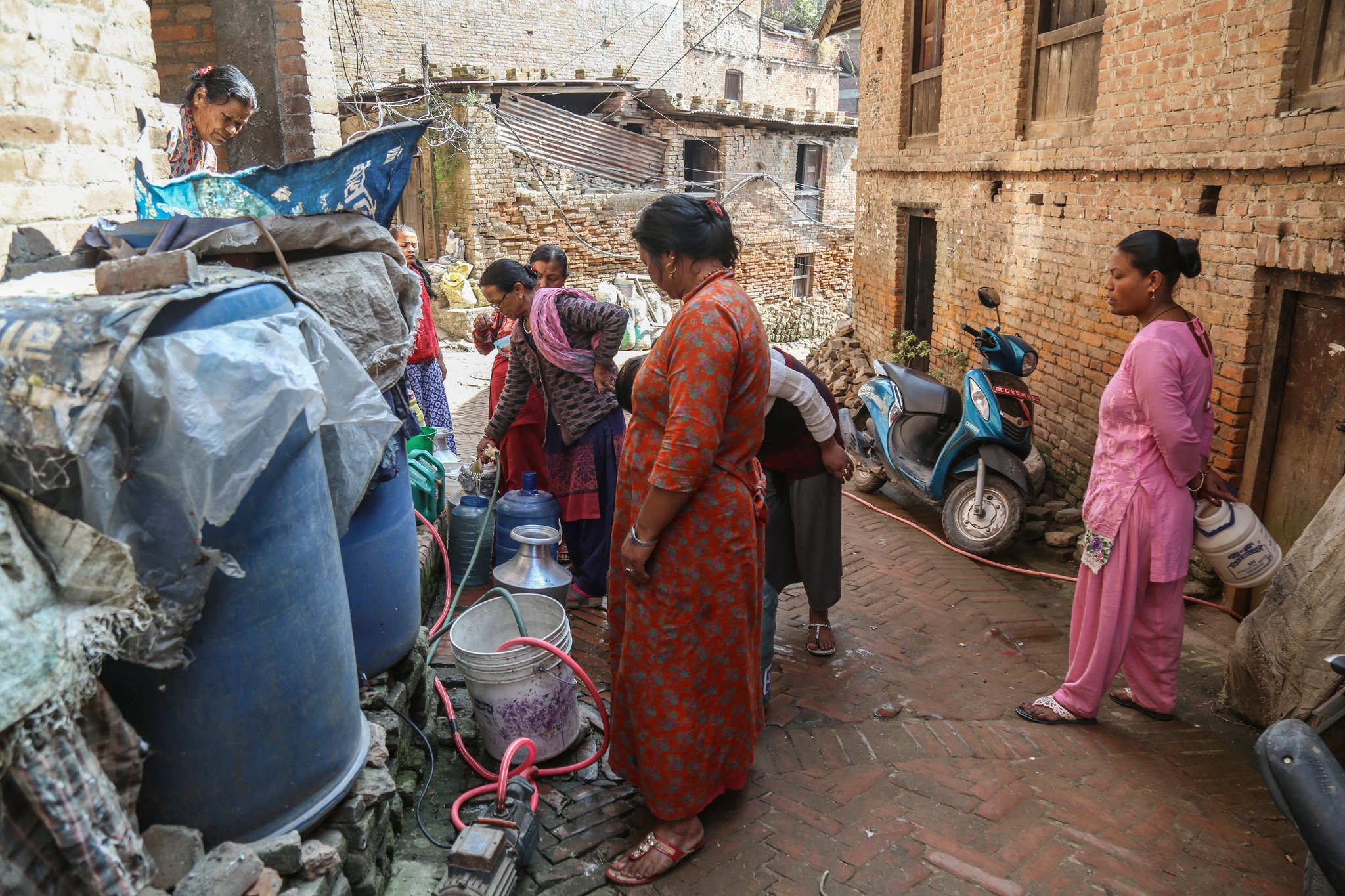
In Kathmandu, as in much of South Asia and parts of the Middle East, South America and sub-Saharan Africa, these men and their tanker trucks sometimes prevent entire cities from running dry. Without them, millions of households wouldn’t have sufficient water to cook, clean or wash. Or perhaps any at all. And without them, an already deteriorating infrastructure might break down completely, as the tanker men know well. “The city depends on us,” said Maheswar Dahal, a businessman who owns six trucks in Kathmandu’s Jorpati district. “There would be disaster if we didn’t do our work.” Yet there’s another side to them, too, one that is less pleasant and sometimes outright nasty. Tankers frequently deliver poor quality water, which can sicken. They usually charge much more than the state, devastating to the poor. Tanker water costs on average 10 times more than government-supplied pipeline water, according to a World Resources Institute study of water access in 15 cities across the developing world, a figure that rises to 52 times more in Mumbai.
Greedy, uncompromising and fearful of being knocked from their perch, some tanker operators even conspire among themselves to fortify the conditions that contributed to their emergence in the first place. Locals tell tales of frequent underhand deal making, pipeline sabotage and egregious environmental destruction. “They’re all thieves, rotten thieves, who should be hanged,” said Dharaman Lama, a landlady who rents out rooms alongside the Bagmati River in the Nepali capital. “It’s disgusting what they do to us.”
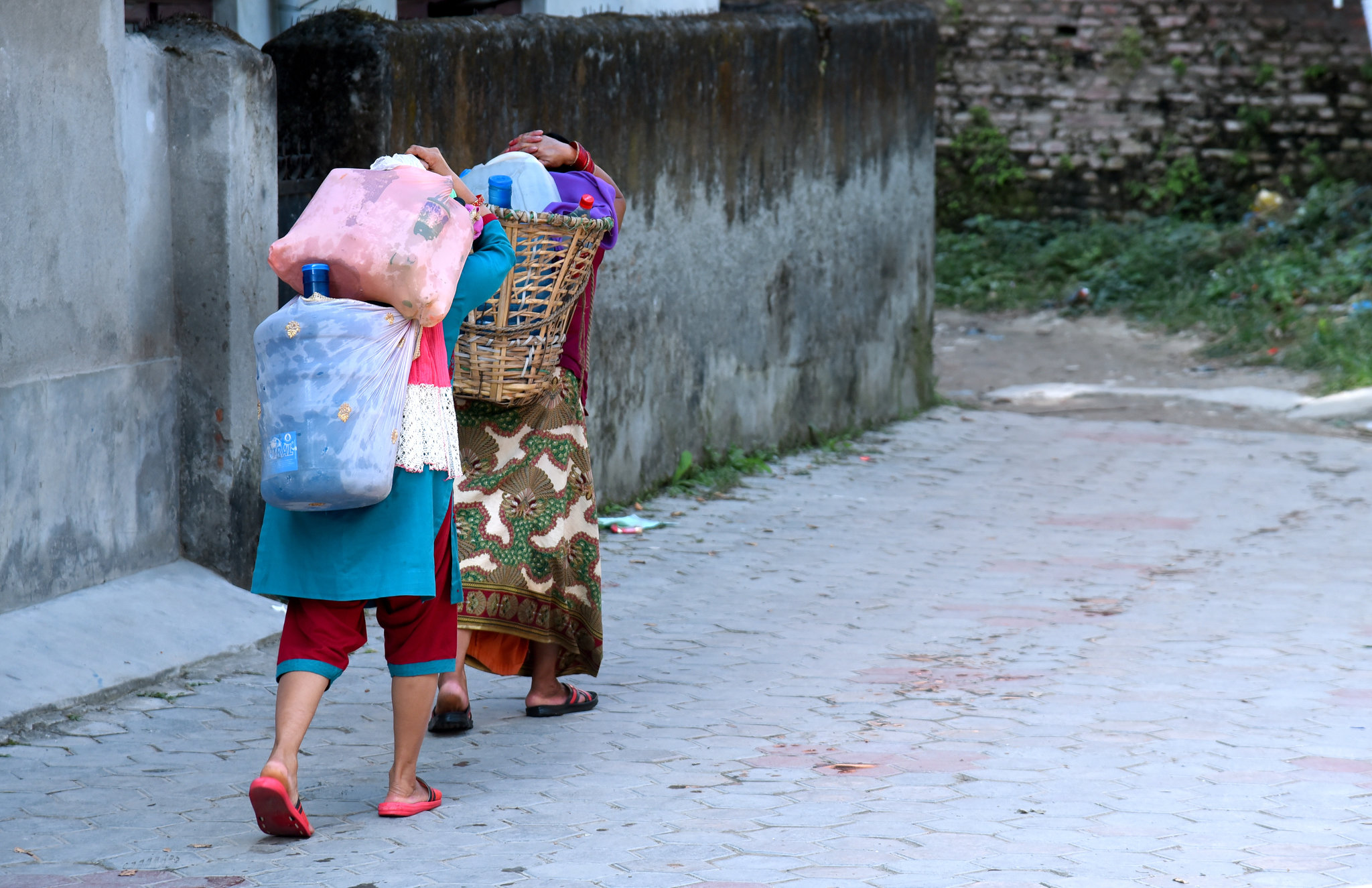
Leaky Beasts
In some ways, these tankers are just another phase in a decades-long global process of water privatization. Many authorities believe the private sector is better at eking results out of overwhelmed utilities and have given up control of key resources. Tankers have piggybacked off that trend to secure contracts, or simply muscle in, across dozens of cities — even as officials elsewhere have concluded that water is best kept in public hands and reined in corporatized services. The tanker fleet in Karachi, Pakistan, might have doubled over the past decade. The number in Lagos, Nigeria, has quadrupled during that time, two researchers there estimated to me, though, like in many other cities, its tankers operate in such administrative shadows that not even ballpark estimates exist. In Yemen, tankers have cornered much of the urban market since the Saudi-led intervention began in 2015. And throughout the Indian subcontinent, in particular, tanker businesses big and small have boomed as the region’s cities have swelled. Often arriving in puffs of acrid black smoke, these leaky, rust-coated beasts have become a ubiquitous sight from Bangladesh to Bolivia.
But the tanker industry might also be an early illustration of how parts of the private sector stand to profit from a warming and fast-urbanizing world. The urban population of South Asia alone is projected to almost triple to 1.2 billion by 2050, and as infrastructure decays and cities continue to sprawl into areas that aren’t served at all, tankers are well-placed to absorb some of the shortfall. Up to 1.9 billion city dwellers might experience seasonal water shortages by midcentury, according to the World Bank. “Tankers meet a need in the short and medium-term,” said Victoria Beard, a professor of city and regional planning at Cornell University. “ You can function without electricity, but not without water. And where you have no alternatives, you’re going to have all sorts of players filling the gap.”
For city authorities that are already struggling to maintain the current supply as climate change strikes, let alone source additional water, tankers can seem like a safety net they feel powerless to resist. When severe drought emptied Cape Town’s reservoirs in 2017 and 2018, wealthy residents sidestepped restrictions by buying extra water from informal operators. When Chennai, one of India’s largest cities, almost ran dry amid weak rains this summer, over 5000 private tankers ferried in water from outside. As these shocks intensify and affect more cities, the tanker men look set for boom times.

Two women carrying water bottles and jars from a traditional tap known as Rani Devi Dhunge Dhara to their respective homes. They have to walk for around 30 minutes every day to transport around 40 liters of water apiece.Credit...Purnima Shrestha for The New York Times
Perched at the foot of the water-rich Himalayas and blessed with a fierce monsoon, Kathmandu should never have become a poster child for the perils of tanker dependence. But years of rampant state mismanagement and booming in-migration from the countryside, particularly during the Maoist insurgency, have massively overextended its pipeline network. Interviews with dozens of businessmen, officials, and residents reveal the extent to which the tanker industry has taken full advantage. Beginning in the late 1990s, tankers began to spread from neighborhood to neighborhood, picking up customers among both poor and rich residents. At first, they were welcomed as a solution to the city’s interminable water pipeline disruptions. That soon changed as the less affluent began to chafe at their high prices and unsavory practices. Previously run-of-the-mill tasks, like washing, began to require careful financial calculations. “Before, I didn’t think about how often I could shower or when I can clean the house,” said Laxmi Magar, a housewife and mother of six. “But now that water is so expensive I watch every drop.”
Many families have been forced to alter what they cook, how they cook and whom they host. Water-intensive dishes, such as spinach, are off the menu for many. Large open fires in aging apartment blocks are frowned upon because there is insufficient water to douse flames if they spread. In a country where hospitality is treasured, guests are sometimes unwanted, or almost feared, as extra bodies to accommodate. At roughly 1800 Nepali rupees ($15.60) for 5000 liters, tanker water is about 40 times more expensive than pipeline water. Among the city’s poorest and most vulnerable, tanker shenanigans have fueled some of the worst urban water access in the world. Because few of Kathmandu’s slums are connected to the water grid, they’re completely dependent on outside assistance during the dry season. The tankers raise their rates accordingly. And because many of these areas have narrow, tuk-tuk-wide streets sprawled across steep hills that often turn to mush in the monsoon, the bigger trucks can’t get through, meaning residents have to buy in smaller sums from middlemen at grossly inflated prices. Even ostensibly middle-class families are suffering as a consequence.
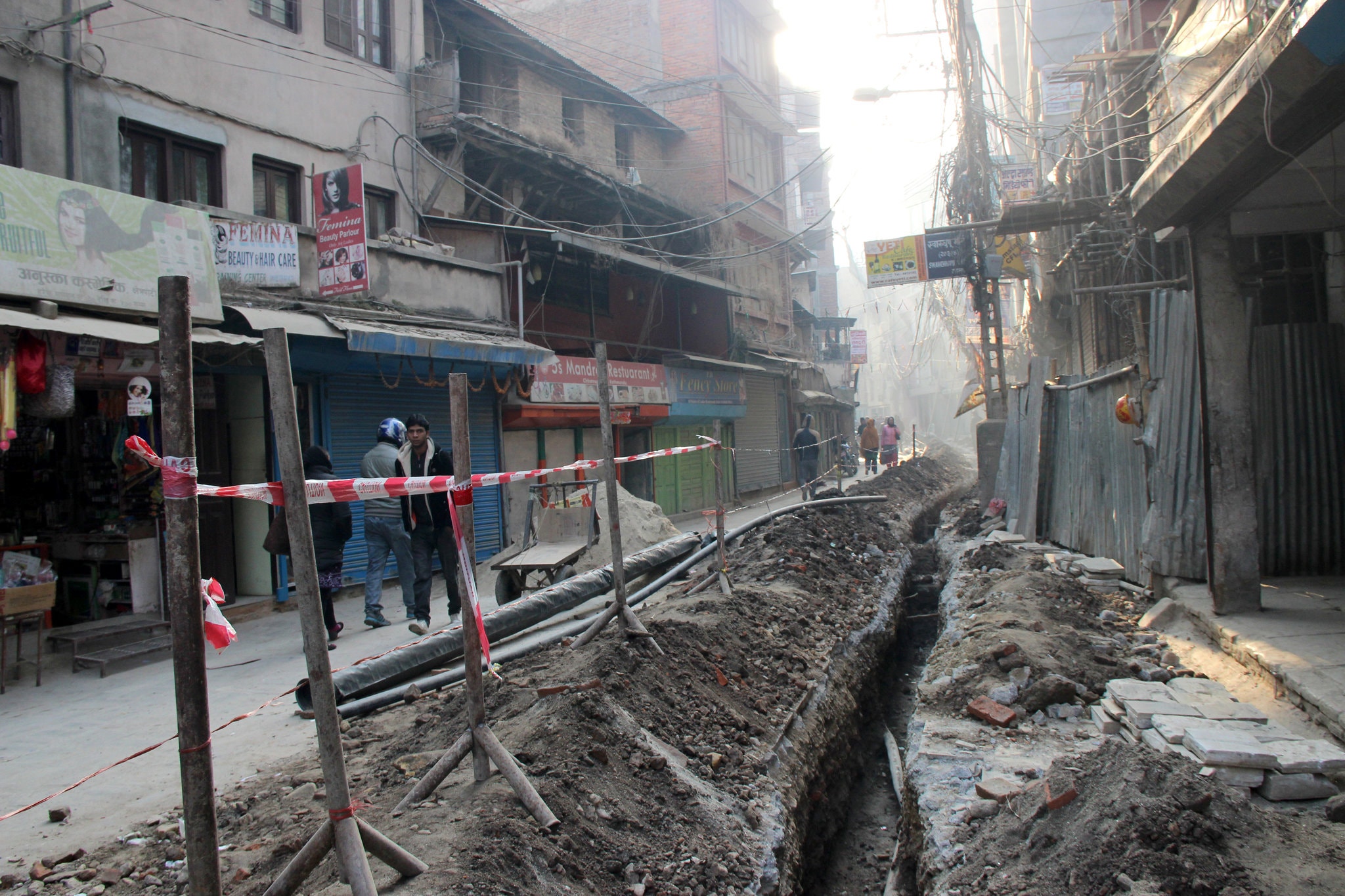
Workers digging the road as part of Melamchi Drinking Water Project some two years ago in Chhetrapati, Kathmandu. The project has yet to be completed.Credit...Purnima Shrestha for The New York Times
Nira Kasaju and her husband work in government factories in Bhaktapur, a city a few miles to Kathmandu’s east, and together earn more than their neighbors. But with limited vehicular access to their crumbling 17th century apartment building, they depend on narrow-bodied, tractor-drawn tankers that sell water at double the normal rate. They’ve since had to cut back on everything from toys for their children to holiday decorations. “Whatever it costs, we pay. We have no choice,” Ms. Kasaju said, as she sprinkled her stairwell with a few drops of water to keep the dust down. “This is unacceptable, of course, but what can we do?” The World Health Organization recommends that households spend no more than 3 to 5 percent of their income on water, but tanker-dependent Nepalis shell out up to 20 percent of their earnings, a figure that can rise to over 50 percent in parts of rural Jordan.
Many customers say they would be able to manage the expense if only the water came clean. But that’s increasingly not the case. Residents report frequent skin problems, intestinal bugs and diarrhea, which compels those who can afford it to spend more money on “jugs” of potable water, and forces those who can’t to miss school or workdays. Again, it’s the poorest and most captive customers who get the worst of the water. (It could be even worse. Tankers in the Bolivian city of Cochabamba have been known to fill from chlorinated swimming pools, according to a WRI researcher in that city.) Tankers strike deals with corrupt officials to limit pipeline flow and thus maximize their earnings, while also campaigning against public works projects that might break their strangleholds. In Lalitpur, Kathmandu’s adjoining city, residents around the landmark Patan Durbar Square said tankers paid officials not to fix many of the free, ornate public standpipes that were knocked out by the deadly 2015 earthquake. It’s a similar in Bangalore, India, where some state valve men are reportedly conspiring with businessmen. Competition among Kathmandu’s roughly 400 tanker-owning businessmen is so ferocious that they regularly smash one another’s vehicles and call in favors from friendly politicians to shut down their rivals. “The competition is just unhealthy,” said Dharmanda Shresthra, who owns three tankers and a water bottling factory. “Everyone is always after each other and after profit, and it affects the quality of the water.”
And, crucially, the kingpins have few inhibitions about over-exploiting water resources, jeopardizing the environment and their cities’ long-term vitality. Tankers are tapping groundwater so relentlessly that many wells yield up to 20 percent less water every year. Dozens of deep boreholes and springs have already been exhausted. Unless there is a dramatic change of course, water experts — and many of the tanker men themselves — fear there will soon be few local resources left to tap. Standing alongside the water filling station he operates at Khahare, in the hills to the south of Kathmandu, Krishna Hari Thapa was in a reflective mood in October. For the best part of a decade, he’s watched — and profited — as the number of tankers at his spring has increased from around 30 to over 80 a day. He’s watched too as the once mighty local spring has slowed to an unimpressive trickle. “Twenty years ago, it was like a river here, and now it’s not. You can only guess what it will look like in another twenty years,” he said. But Mr. Thapa won’t stop, no matter how low the flow goes, he says. The money is too good. And besides, “where else would people get water?”
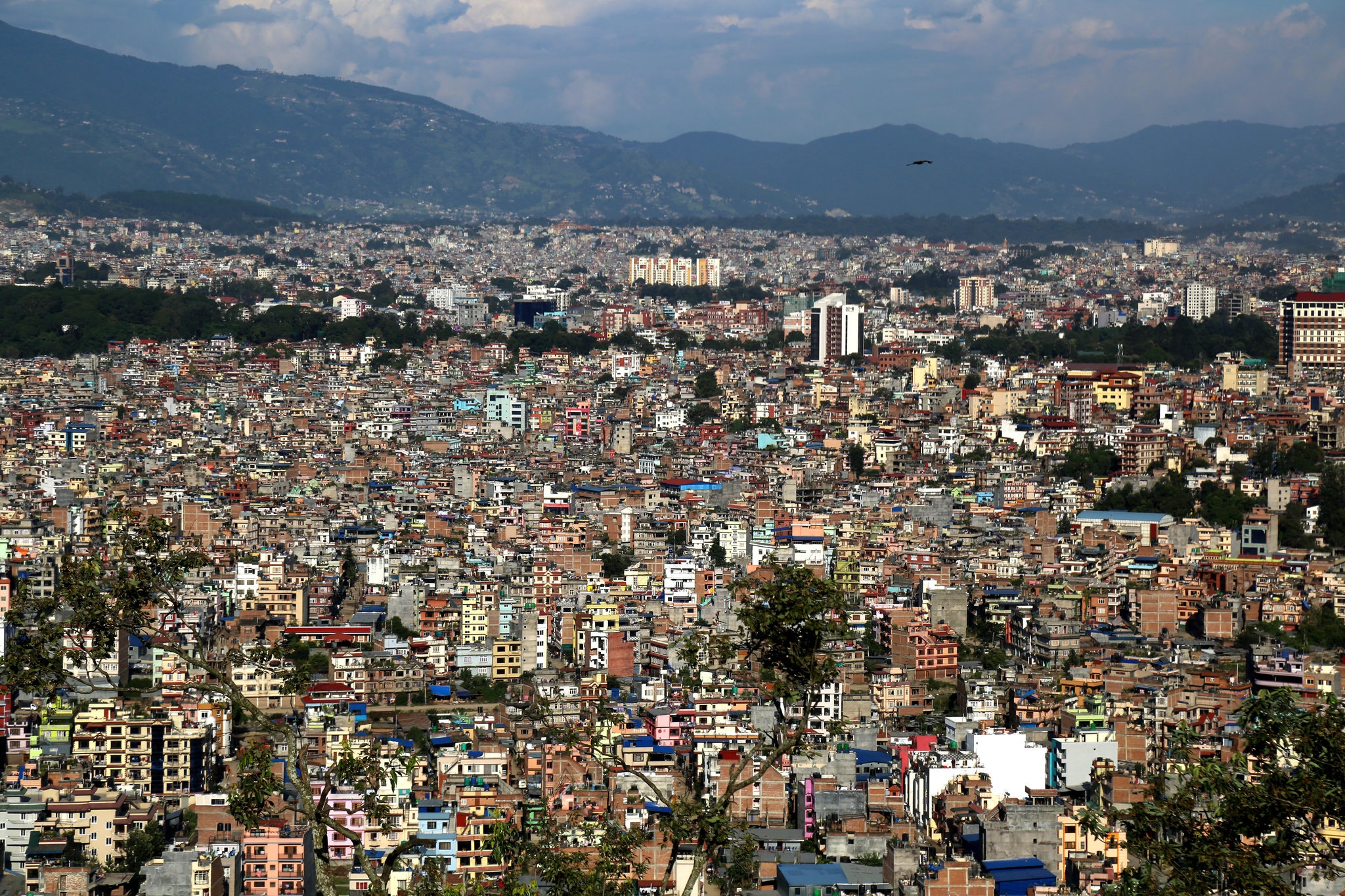
Kathmandu, Nepal’s capital, is often criticized for unplanned urbanization.Credit...Purnima Shrestha for The New York Times
Rocky Roads to Recovery
Amid mounting public anger and shriveling resources, even big-time tanker operators admit their industry is out of control. For all their distasteful ways, though, the tanker men say they’re not the biggest villains in this sordid saga. That label, they insist, is best applied to the state, without whose repeated failures they never would have had an opening. The industry has a point. “Let’s face it: the private sector came in because the public sector failed,” said Dipak Gyawali, a political economist and former water minister. “And until you clean up government’s act, nothing will change. The tankers are just a symptom.” These failures begin with the pipelines. Kathmandu Valley’s water delivery is so poor that its recipients average as little as one hour of running water every week, during which they’re expected to fill rooftop or underground cisterns. The pressure is so weak that many households capture no more than 250 liters on each occasion. For these people and the roughly 30 percent of residents who receive nothing at all, tankers tide them over until the next pipeline flow. Officials recognize it’s a crisis, but say the solution is out of their hands. “Frankly speaking, the demand-supply gap is huge: demand is 400 million liters a day. Supply varies from 90 to 150 million liters,” said Sanjeev Bickram Rana, the executive director of the Kathmandu Valley Water Supply Management Board. “How can we bridge that gap?”
The roads in the area also impede water delivery to residents. Most trucks source their water in places like Khahare, where the terrain begins its slow climb to the Himalayas. But the rural roads are so rough that they can’t drive fast for fear of snapping axles, and the city’s poorly designed transport network is frequently snarled with traffic. Businessmen say their trucks could perform double their current daily average of four deliveries and thus sell more cheaply if they could move quicker. But with no expectation of improved roads, tanker drivers have implemented their own precautions. Some pad their ceilings with folded newspapers to cushion the blows as they get bounced around their suspension-less vehicles; others deck their cabins out with so much religious iconography they can scarcely see through their windshields. The most impatient, or those who work the most traffic-clogged routes, take things further. Many trucks have equipped themselves with mini TVs or booming sound systems. The government’s proposed solution to these grave water shortages, the Melamchi project, has turned into a four-decade-long fiasco of almost unrivaled incompetence. First proposed in the 1970s and begun in 2000, this scheme to divert a mountain river from the Himalayas has been so delayed that the water it will bring — 170 million liters a day in its first phase — is already insufficient to cover half of Kathmandu’s needs. It’s not a good plan, anyway, experts say. The pipeline network is so riddled with holes that “you could have Lake Baikal on the other end and it still wouldn’t be enough, ”Mr. Gyawali said.
In an interview at her family’s tightly guarded compound, Bina Magar, the minister of water supply, blames her predecessors for the severity of the water deficit. “For so long we had unstable governments that have lasted one year, six months, eight months.” she said. “Now we have an opportunity to bring stability and fix everything.” And while the minister conceded that tankers have helped mask the state’s shortcomings — so much so that every ministerial residence relies on them — she insists they’re living on borrowed time. “They charge too much. We charge much less. Once Melamchi is complete, we will be the answer.” But corruption and bureaucracy riddle almost every level of state, ensuring the tankers perform even worse than they otherwise might. Tanker men field so many demands for bribes that they sometimes keep wads of cash on hand for that purpose. If they don’t pay sums that vary from 5,000 ($43) to 100,000 ($866) rupees, they can get shut down, a dozen businessmen said. These costs, too, must be passed on to the consumer. Officials are noticeably tentative in their denials. “These claims are not related to our organization, but perhaps the traffic police or someone else,” said Mr. Rana of the water management board, citing what’s widely seen as the greediest branch of Nepali officialdom.
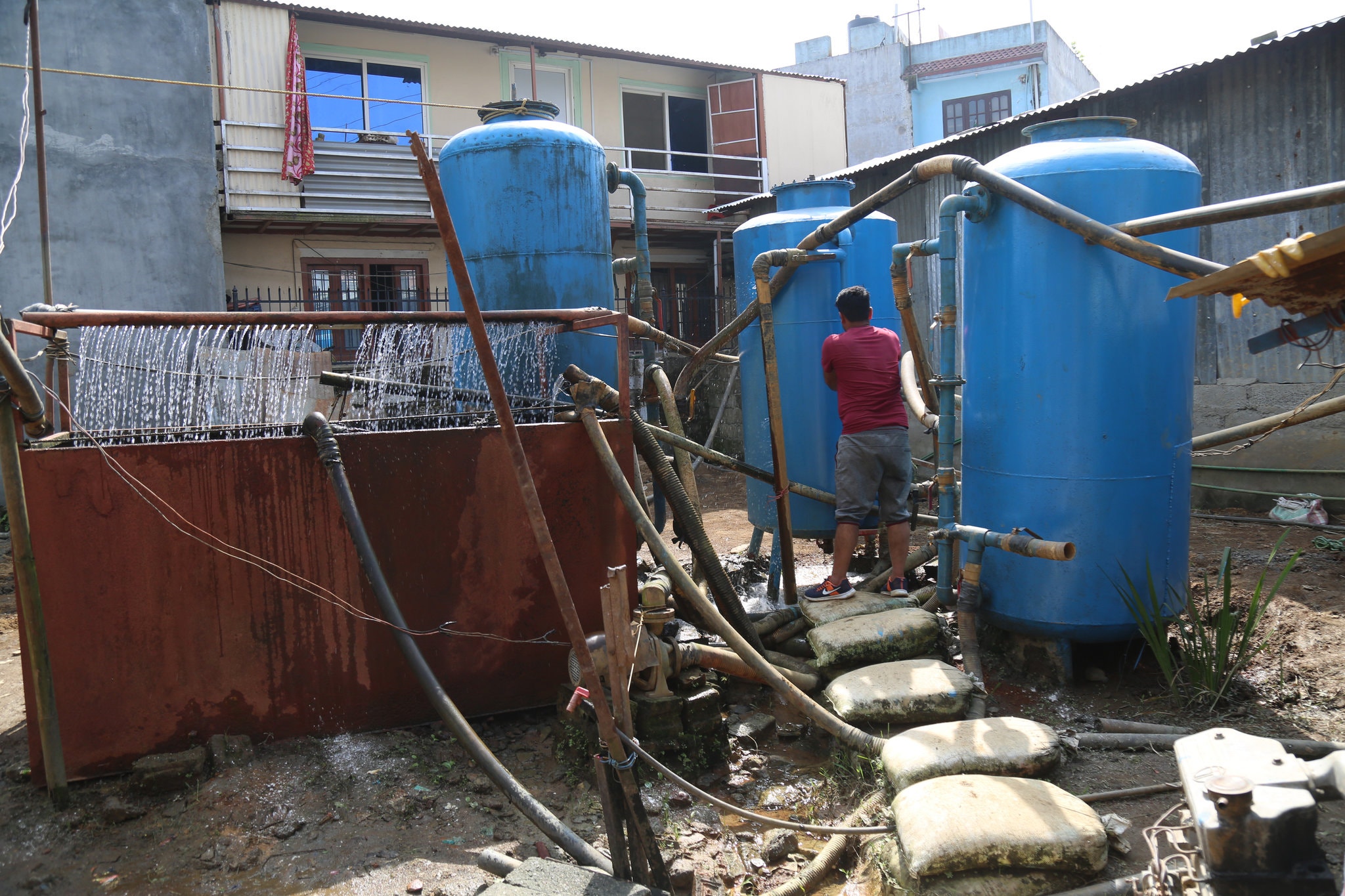
A worker storing water from boreholes in Jorpati, Kathmandu. Credit...Purnima Shrestha for The New York Times
In fact, the state’s disregard for the water sector is so pronounced that the poor quality of tanker water is as much a consequence of shoddy or nonexistent regulation as opportunism. The state implemented a color-coded sticker system to gauge tanker water in 2012 — green for drinkable water, blue for household use, yellow for construction-quality — but years on it still isn’t properly enforced. Kathmandu Valley Water Supply Management Board says it lacks the resources to monitor more than three days a week; the tanker men say officials don’t care as long as their pockets are lined. No one disagrees that it’s a mess. As chairman of the largest water tanker association, Pradeep Prasad Pathak is charged with defending business interests, a task that he said is getting trickier as the state falls back on “divide and rule” tactics by playing off tanker men against one another. “The government has never felt responsible for supplying water to the people. It’s always the case in cities like Kathmandu that people like us do their job for them,” he said. Some tanker men lack the education to differentiate between good water and bad, he acknowledged, which is precisely why the industry needs to be regulated. “We’re not heroes. We need some controls as well.”
Drying Out
For the time being, neither the state nor most tankers have much inclination to change their ways. Circumstances might soon force their hand, though. Demand for water is growing so swiftly that tanker operators can’t meet all orders in the dry season, no matter how much they hike their prices. “Every year, more people come to us, which is great,” said Maheswar Dahal, the Jorpati tanker man. “But in the winter, we have to tell them, ‘it might take five days,’ or sometimes we just have to say ‘no.’” In times of scarcity, it’s the best customers, generally the rich, who get priority from the pipeline and tanker operators alike. Supply is also shrinking, in part because authorities are mishandling growth that in Kathmandu, as in most South Asian cities, is far outpacing that of the region at large. In addition to the tankers’ over-exploitation of boreholes, the city is eating into its remaining forests, which feed the springs, while also sprawling over aquifer recharge areas. For much of the rainy season and the months that follow, many households use hand pumps to extract from the shallow aquifers under their properties and provide for at least some of their needs, but the more the valley is tarmacked over the less the groundwater is replenished. Climate change, in turn, is making the rains more erratic, which limits rooftop rainwater harvesting, and fuels floods that contaminate some aquifers.
And as this gap between supply and demand widens, the public is beginning to lash out. Residents of water-impoverished districts have assaulted water officials when they venture into their areas. Water tankers have been attacked when they have gone on strike, and people are increasingly fighting each other as water becomes scarcer and more expensive. Though many Kathmandu area farmers welcome tanker men and often make more from leasing wells than growing crops, increasing numbers of their peers in India and elsewhere are butting heads with businessmen whom they accuse of drilling them dry. “We get no water from the pipelines, less water from our well, and we can’t afford tanker water. Of course we’re angry!” said Anjali Tamang, a student, as she picnicked with friends along the Bagmati.
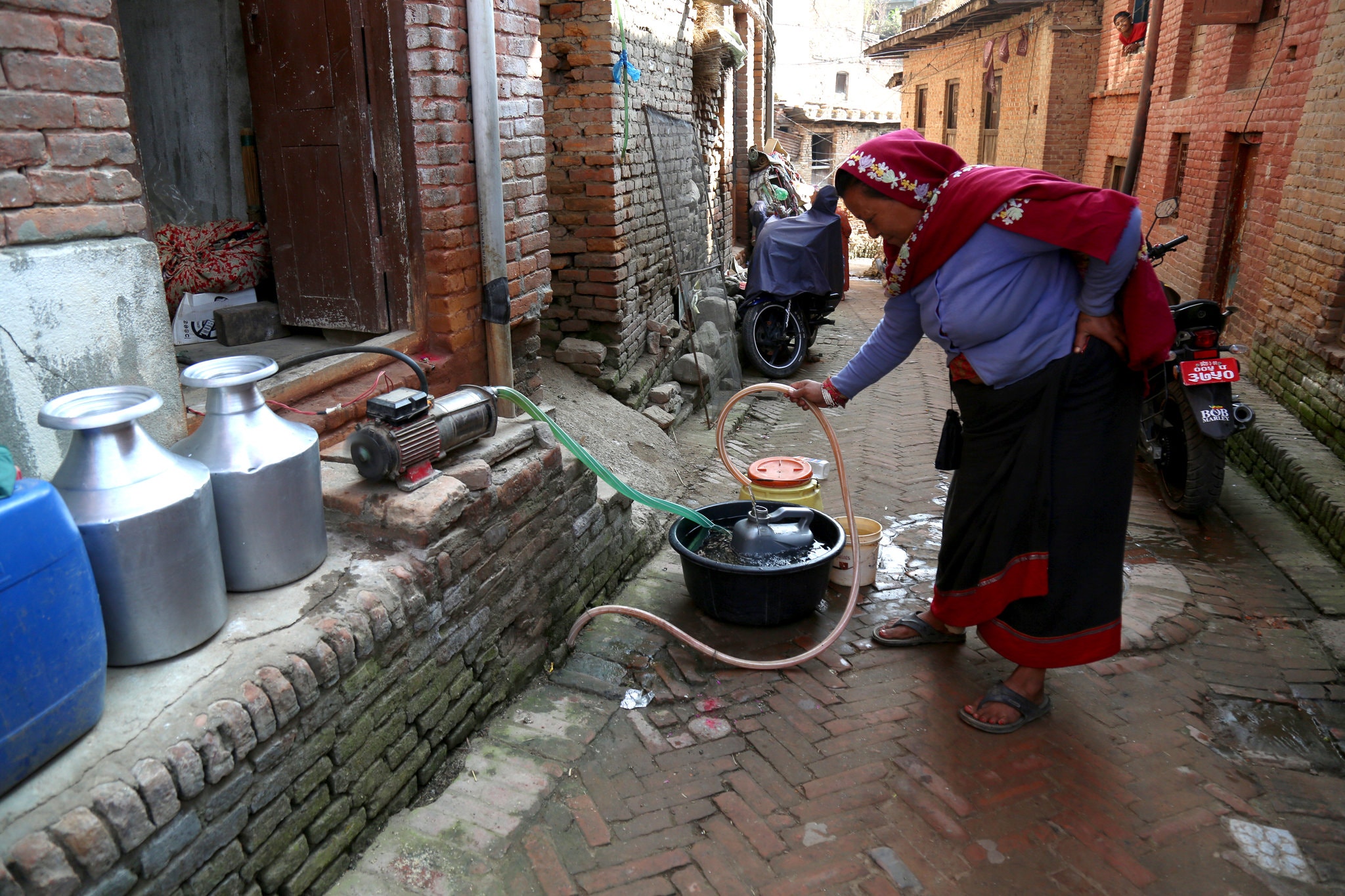
A woman fills jars from the water supplied sporadically by the Nepalese government. Credit...Purnima Shrestha for The New York Times
With some households subsisting on as little as 15 liters per person a day, well below the United Nations’s minimum acceptable standard of 20 liters for refugees, community leaders warn of more severe violence unless the government solves the crisis. There are signs of hope. With their profits threatened by depleted resources, some tanker men have begun to adopt more sustainable extraction practices. In Chandragiri, a fast-expanding outer neighborhood of Kathmandu, six tanker men have banded together to try and save the forest on which their springs — and income — depend. In several municipalities far to the south of the capital, local administrators have signaled what can happen when they, not the central government, are entrusted with control of utilities. Hetauda municipality now delivers at least six hours of running water a day, at 60 percent of the price the state charges in the capital, which has shut out most private water providers.
Away from Nepal, in other water-impoverished megacities, authorities have proved that seemingly intractable shortages can be addressed, or at least somewhat allayed, while reining in private tankers. From Delhi, which is rehabilitating up to 500 lakes and wetlands in order to boost groundwater recharge, to large parts of urban sub-Saharan Africa, where public standpipe access has expanded, a number of cities are at least trying to cut back on informal water provision. “I think optimism at this point would just make us complacent, but not everything is lost,” said Aditi Mukherji, a senior researcher at the International Water Management Institute in New Delhi. “We have solutions, even if none of them are easy.” But until Kathmandu and its growing cohort of struggling urban peers radically alter their ways, they won’t be among that select few. Residents certainly expect little to change. If anything, they’re gearing up for more thirst, more expense and even more vulture-like practices. On a Saturday morning in late October, Sunita Suwal waited outside her house in Bhaktapur for the weekly pipeline delivery to flow. She grew increasingly angry as the scheduled time passed. Then, she waited another hour, losing out on a shift at a seamster’s workshop that she could ill afford to miss. Finally, as the morning ticked by with no water in sight, Ms. Suwal snapped. “The state fails us. The tanker men rob us,” she said. “They all just want to make money from us. Really, what’s the difference?”
Source: The New York Times, 11th January,2020